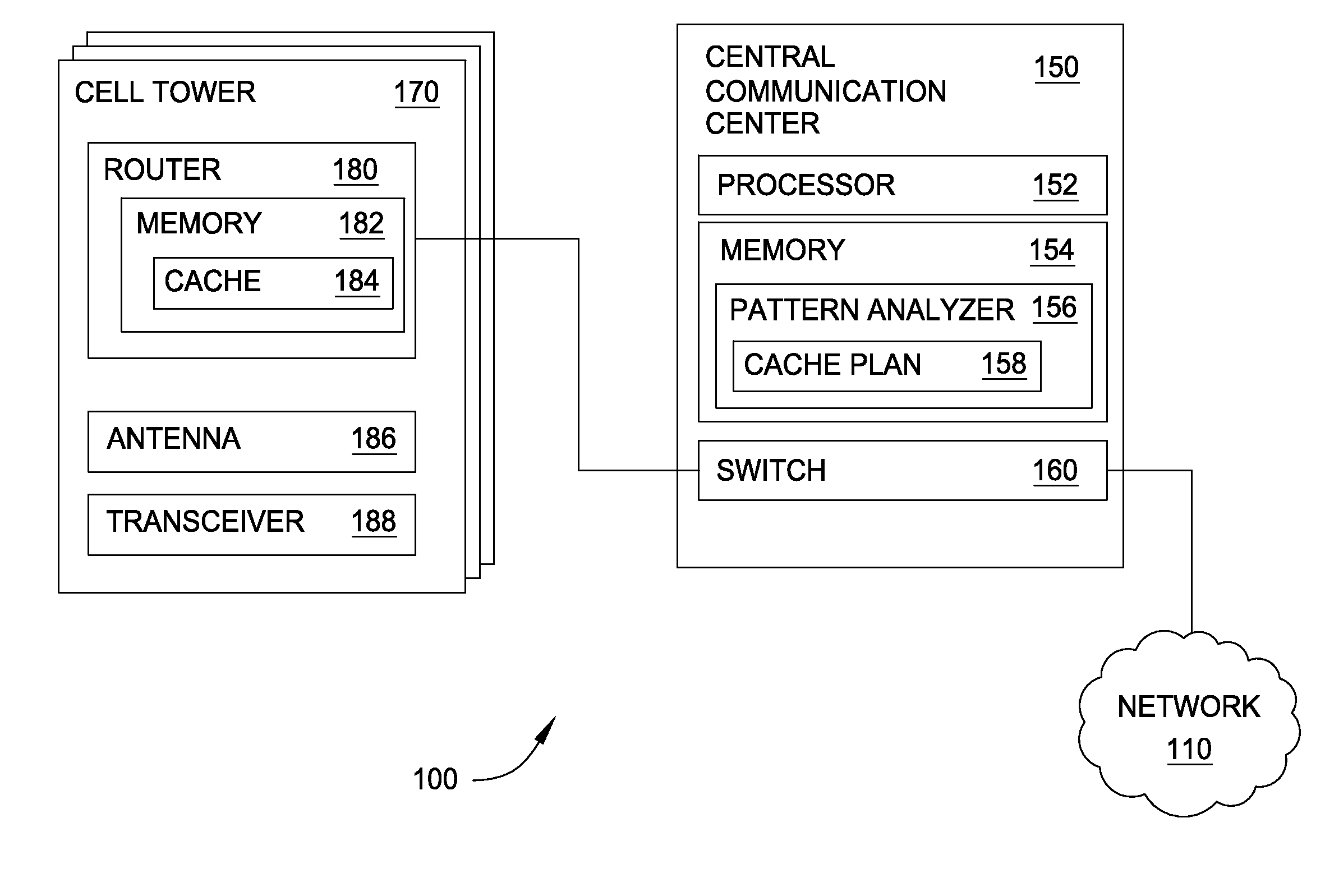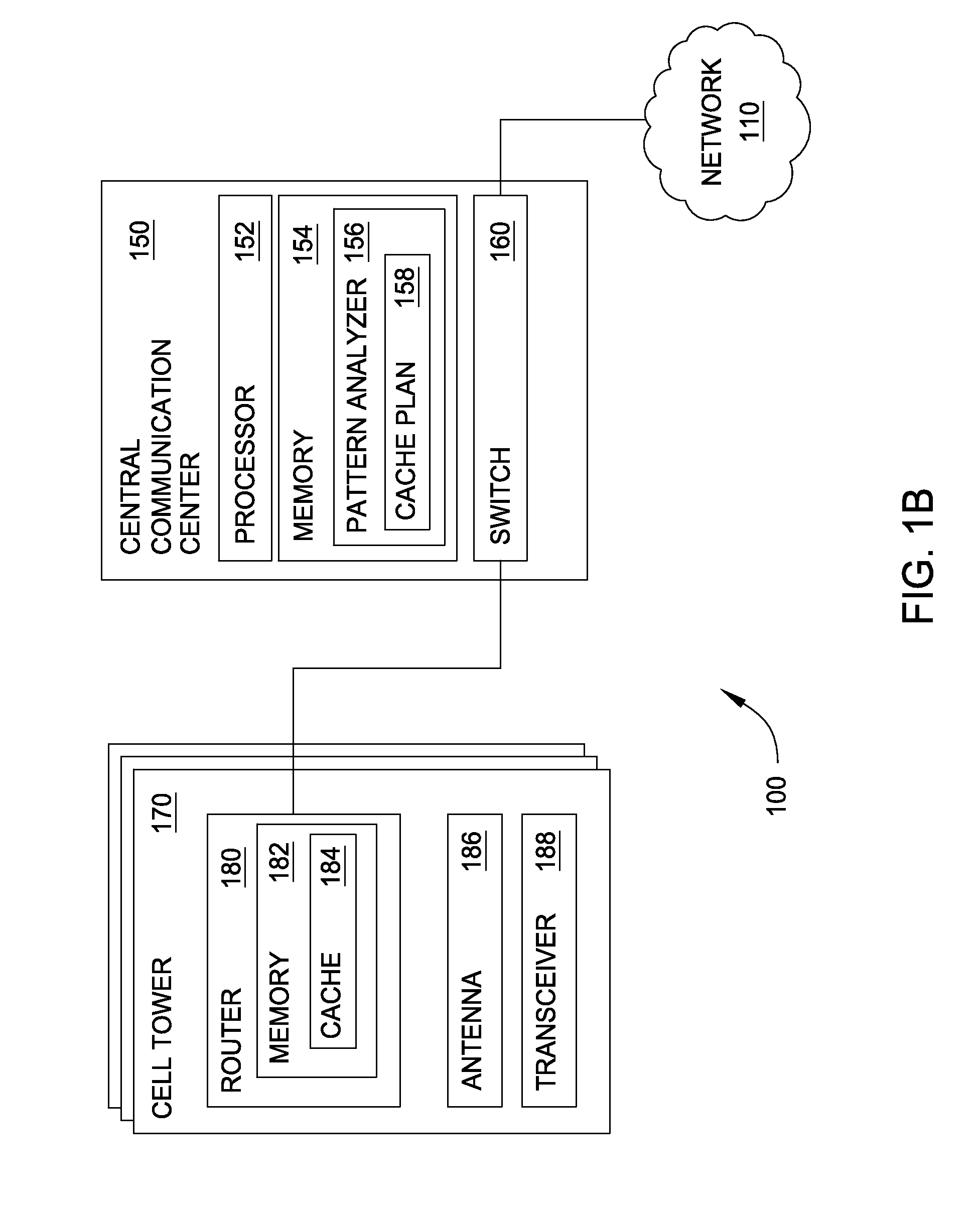Data services using location patterns and intelligent caching
a technology of location patterns and data services, applied in the field of data services, can solve the problems of limited mobile device service ability, low speed of wireless network providers, and inability to service requests made by mobile devices
- Summary
- Abstract
- Description
- Claims
- Application Information
AI Technical Summary
Benefits of technology
Problems solved by technology
Method used
Image
Examples
Embodiment Construction
[0011]The limitations of a wireless communication channel can limit the ability of a wireless network provider to quickly fulfill requests from users to access a website, download files, stream audio or video, and the like. As more and more people choose to access data wirelessly rather than relying solely on wire-based communications, wireless network provides (e.g., cell / mobile phone network providers, public transportation providers, airline carriers, and companies or institutions with a plurality of wireless access points) struggle to maintain an infrastructure that can keep up with demand. Cell phone network providers, for example, typically build large and expensive cell tower installations to satisfy customer demand. Moreover, the portability of mobile devices also means that wireless access points may be inefficiently used—i.e., too many users try to access one wireless access point but too few at another. Thus, even if a wireless network provider's infrastructure is suffici...
PUM
 Login to View More
Login to View More Abstract
Description
Claims
Application Information
 Login to View More
Login to View More - R&D
- Intellectual Property
- Life Sciences
- Materials
- Tech Scout
- Unparalleled Data Quality
- Higher Quality Content
- 60% Fewer Hallucinations
Browse by: Latest US Patents, China's latest patents, Technical Efficacy Thesaurus, Application Domain, Technology Topic, Popular Technical Reports.
© 2025 PatSnap. All rights reserved.Legal|Privacy policy|Modern Slavery Act Transparency Statement|Sitemap|About US| Contact US: help@patsnap.com



